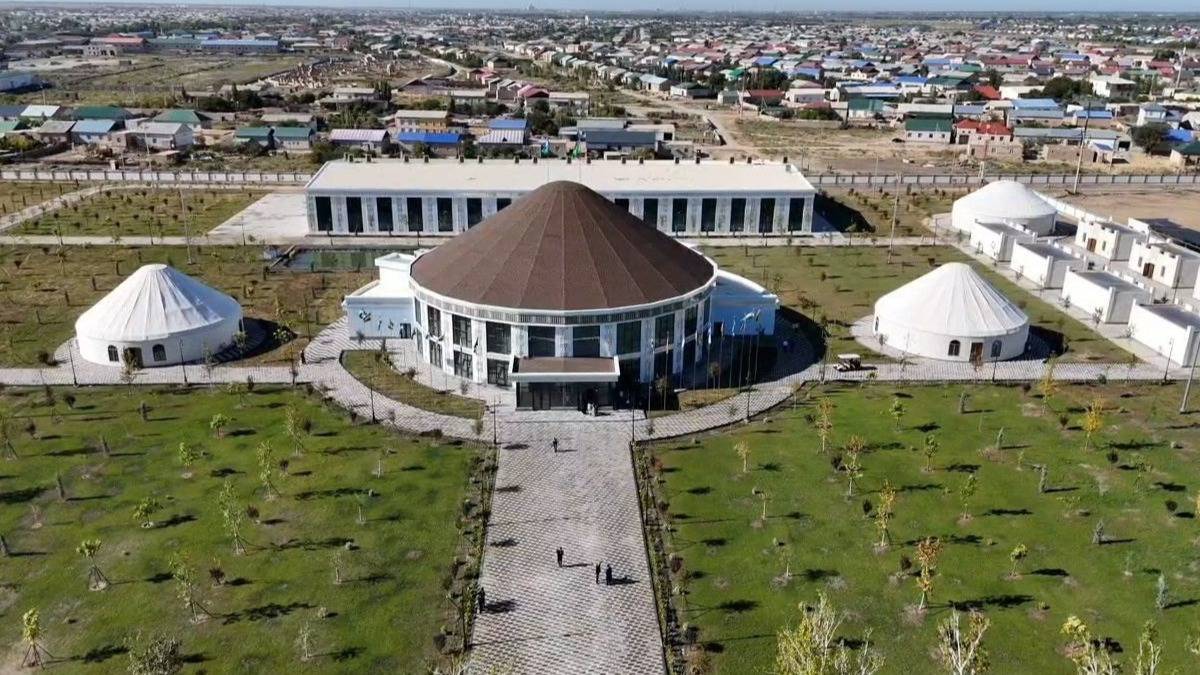
Nukus (Karakalpak: Nókis / Нөкис / نوکیث; Uzbek: Nukus / Нукус / نوکاث) is the sixth-largest city in Uzbekistan and the capital of the autonomous Republic of Karakalpakstan. The population of Nukus as of 1 January 2022 was 329,100.[1] The Amu Darya river passes west of the city. Administratively, Nukus is a district-level city, that includes the urban-type settlement Karatau.[2]
The city is best known for its world-class Nukus Museum of Art.
History
The name Nukus comes from the old tribal name of the Karakalpaks, Nukus (in Persian: نوکاث Nūkās, "New Kath").[3] Nukus developed from a small settlement in 1932 into a large, modern Soviet city with broad avenues and big public buildings by the 1950s.
The city's isolation made it host to the Red Army's Chemical Research Institute, a major research and testing center for chemical weapons. In 2002 the United States Department of Defense dismantled the Chemical Research Institute, the major research and testing site for the Novichok agent, under a $6 million Cooperative Threat Reduction program.[4][5]
Turtkul city became the administrative center of the autonomous region of Karakalpakstan when the Soviet authorities came to power. However, in the 20s, Amu Darya, which was 12 km from the River Bank, was threatened with the flush of Turtkul, which caused the core of Karakalpakstan to move towards Nukus.[clarification needed] In 1932 the city was officially founded. It is the center of Karakalpakstan's economy, government, politics and culture.[6]
Sights
Nukus is host to the Nukus Museum of Art (also known as the State Art Museum of the Republic of Karakalpakstan, named after Igor Savitsky) and State Museum. The State Museum houses the usual collection of artifacts recovered from archaeological investigations, traditional jewelry, costumes and musical instruments, displays of the area's now vanished or endangered flora and fauna, and on the Aral Sea issue. The Art Museum is noted for its collection of modern Russian and Uzbek art from 1918 to 1935. Stalin tried his best to eliminate all non Soviet art from this period, and sent most of the artists to the gulag.[citation needed] Both Savitsky himself and the collection at Nukus survived because the city's remoteness limited the influence and reach of Soviet authorities. The documentary film The Desert of Forbidden Art is all about the collection and its history.[7]
Nukus is also home to the Amet and Ayimkhan Shamuratovs house museum, a center for Karakalpak music and oral culture. The museum's collection represents personal belongings of the Shamuratovs including stage clothes, photographs, manuscripts, books, letters.[8]
Nukus and the surrounding area is serviced by Nukus International Airport.
